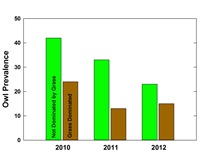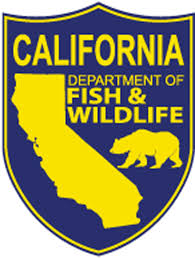The Western Burrowing Owl (Athene cunicularia hypugaea) is a widespread species that shows tolerance towards human disturbances, but observations of population decline across its range have been published in the past 15 years, including local populations in southern California. California Department of Fish and Wildlife (CDFW) conducted a study to identify which ecological variables were significantly associated with burrowing owl use of artificial burrows in southern California. This project involves assisting the CDFW with statistical analysis related to this study.
Research Tasks
1. Review and advise on:
Previous data analysis
Treating all the data points as independent data points
Does owl presence increase use of other artificial burrows
If squirrel use at artificial burrow sites may have been influenced by translocating squirrels
If the time since burrow installation influences the presence of squirrels
If the friability of the soils influences squirrels use of artificial burrows
2. Analyze the dataset using appropriate multivariate methods (e.g., logistic regression):
Assess if owl presence is influenced by:
Type of blockage (woodrat, stick, cholla, bees, dirt, rock)
Stressor type (grazing, invasives, lack of maintenance, predation)
Presence of predator scat (coyote)
Presence of ungulate scat
Assess if the data can be used to meaningfully:
Compare variables (e.g., vegetation height, owl sign) between seasons/years
Determine if owl use is related to burrow characteristics
Determine the turnover rate of burrows used by owls
This project was funded by a grant from the California Department of Fish & Wildlife.




